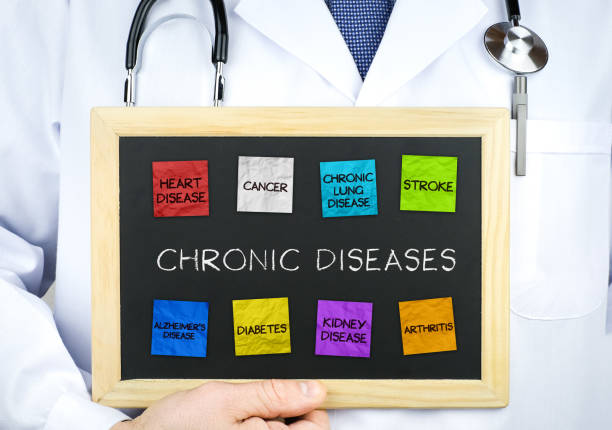Chronic care management (CCM) solutions are designed to improve quality of life by providing patients with added support between visits. This extra support help patients stay on track with their treatment plans and offers resources that encourage connection and accountability. When paired with digital health technologies like remote patient monitoring (RPM), chronic care programs can boost convenience, improve outcomes, and lower healthcare costs. This article explores how CCM solutions work and how integrating RPM can strengthen care delivery and grow revenue.
Chronic Care Solutions
Roughly 129 million adults have one or more chronic health conditions. And one in four adults has two or more. The traditional model of healthcare, where patients wait 6 to 12 months between office visits, leaves dangerous gaps that can lead to long-term disability and premature death. Chronic care management encompasses coordination services that occur outside of regular office visits. By providing CCM solutions and monitoring patients from home, clinicians can intervene early instead of reacting too late.
Chronic care solutions can help encourage patients to overcome challenges by following their treatment plans, reducing emergency visits and readmissions, and freeing healthcare resources. The Centers for Medicare and Medicaid Services (CMS) acknowledges that CCM is an essential primary care service that significantly improves patient health and care. Additionally, CCM provides financial value by saving providers’ resources and reducing overall patient costs. Research shows that CCM is highly cost-effective for hypertension, achieving greater long-term cost savings by preventing costly health events.
What Conditions Qualify for Chronic Care Solutions?
To qualify for chronic care management services, patients must have two or more chronic conditions expected to last at least 12 months or until the patient’s death. These conditions must place the patient at significant risk of death, acute exacerbation/decompensation, or functional decline.
Some common chronic conditions that qualify for CCM solutions according to CMS are:
- Arthritis
- Asthma
- Chronic kidney disease
- COPD
- Diabetes
- Cancer (breast, colorectal, endometrial, lung, and prostate)
- Heart Disease
- Hypertension
- Neurological and mental health conditions
CCM Solutions vs. Remote Patient Monitoring
Chronic care services may include remote patient monitoring (RPM), patient education, medication management, care planning, shared decision-making, preventative services, and management of care transitions. The difference between CCM and RPM is that chronic care management is a comprehensive approach to treating patients with chronic conditions. In contrast, RPM uses medical device technology for monitoring patients’ health at home between appointments.
Remote patient monitoring devices, wearables, or mobile applications gather and transmit patient data to healthcare professionals. RPM enables consistent analysis and intervention. Combining both RPM and CCM can benefit patients and providers in many ways.
Billing for CCM Solutions
Chronic care services encourage coordinated care and support for patients that helps them stay on track between visits. Generally, chronic care solutions do not require face-to-face visits. Still, eligible practitioners can bill for chronic care management and remote patient monitoring care coordination services each month. Physicians, physician assistants, clinical nurse specialists, nurse practitioners, certified nurse midwives, federally qualified health centers, rural health clinics, and critical access hospitals can bill for CCM services. However, only one practitioner per patient can be paid for monthly CCM services.
In addition, CMS recognizes that RPM is a valuable form of healthcare delivery for chronic care patients. Therefore, chronic care patients are eligible for both remote monitoring and chronic care solutions. It is important to remember that while RPM services are available for all CCM patients, not all patients qualify for chronic care solutions services.
Increased Revenue with Remote Patient Monitoring
Remote patient monitoring is not restricted to location. This makes RPM accessible to a larger number of patients. Moreover, not all RPM services have to be directly performed by the billing physician.
For example, CPT 99457 can be billed under general supervision. That means Medicare providers can contract third-party vendors for assistance with RPM services. This approach enables clinics to efficiently manage more patients and increase their revenue without significantly impacting their workflows.
The benefits of RPM can be seen in one case of a large Federally Qualified Health Center. By adopting telemedicine, the center experienced a reduction in missed appointments that resulted in monthly cost savings of $45,578. These savings were further increased by implementing a support team that conducted pre-visit device and connectivity testing.
Chronic Care Solutions and Tenovi Remote Patient Monitoring
Tenovi RPM devices and the CCM billing platform offer customized chronic care solutions for chronic care companies. Our FDA-cleared remote monitoring devices, physician dashboard and billing platform provide an efficient and cost-effective option for chronic care management. Please request a free demo to learn more about how we can help your organization achieve its care management goals.


